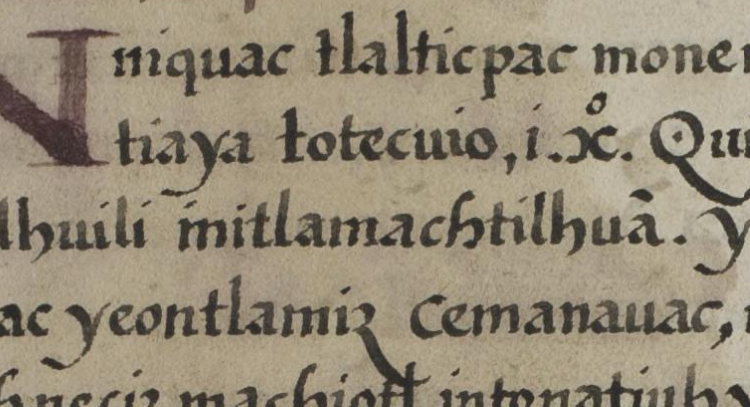Since the first time I heard the Nahuatl language spoken in a country church in San Luis Potosi, Mexico when I was a teenager, I have been fascinated by this language. Despite all odds, Nahuatl has held its own for over 500 years since the Spanish conquest, and continues to be spoken in many parts of Mexico to this day.
In modern times, American missionaries have translated the New Testament (as well as the Old Testament in a handful of cases) into a number of modern dialects of Nahuatl. However, until up to a few years ago, I was unaware that the Scriptures had already been translated into Nahuatl centuries before, during a time when the Catholic Church was a bit more tolerant towards native languages than it later became.
This translation is known as the Evangeliarium, and it was compiled in the mid 16th century. It is worth mentioning that it is not a complete translation of the Bible—in fact, it could be more accurately described as a lectionary, a book containing readings of Scripture organised according to the liturgical calendar. I don’t know whether or not the Nahuatl Evangeliarium was actually used in Catholic mass in times past, but that was clearly its original purpose. It is attributed to Bernardino de Sahagún, a Franciscan friar who took a great interest in Aztec language and culture, although it is very likely that he worked with a number of Nahuatl speakers to produce this book.
Despite the fact that the Evangeliarium does not contain the complete Bible, the more I looked at it the more I thought it would be worthwhile to reorganise the scriptures into books, chapters, and verses as in conventional Bibles. I took an edited version of the Evangeliarium which was published in 1858, and over the span of almost a year (15 minutes a day!) I copied, pasted, and proof-read the text verse-by-verse using Google Books and Archive.org. I used the Bibledit software to compile the text, and I am happy to report that the final result may be browsed and searched at this website:
You can add parallel Bible translations in English, Spanish, Latin, and modern Nahuatl dialects, and you can even compare the original Hebrew, Aramaic, and Greek Scriptures to the Nahuatl.
Now, why is this useful, apart from just being something of historical interest? Before addressing its benefits, first I must highlight some of the deficiencies of this text:
- It was most likely translated from the Latin Vulgate, thus it is a “translation of a translation,” and not a direct translation of the original Biblical languages
- It comes from a decidedly Catholic perspective (which one would expect). One example of this is the word used to translate “baptism,” which literally means “to put water on the head.”
- The orthography used does not indicate long vowels or glottal stops (saltillos), both of which are phonemic in Nahuatl (though rarely indicated in classical texts).
- The language is old—almost 500 years old, and modern Nahuatl dialects have changed a lot since then.
Although this text is perhaps not so useful for teaching God’s Word to people today (being a product of its time and religious culture), I believe it will be useful for anyone who is working to translate the Bible into modern Nahuatl dialects. There are many Bible concepts which are difficult to translate into Nahuatl, and seeing how the first Nahuatl Bible translators chose to translate these terms and concepts can be eye-opening. Although modern translators may not choose to translate them exactly the same way, they can at least have an idea of the possibilities that exist.
I hope that making this text available will be a benefit to those working on such projects, and I think modern Nahuatl speakers will find it interesting as well, a glimpse into their past and a historical artifact from the times when the name of Christ first arrived on the shores of Mexico.
